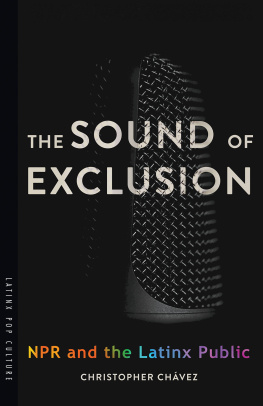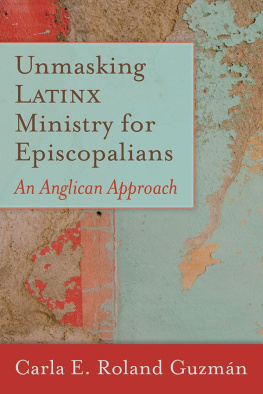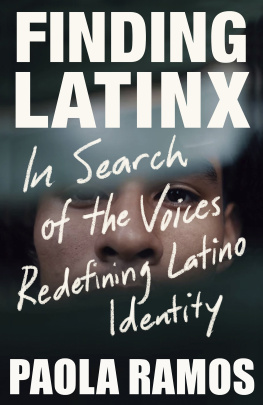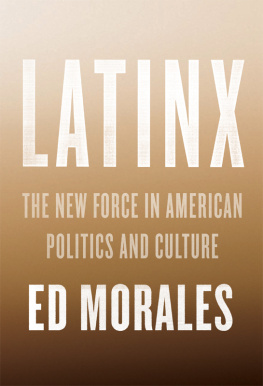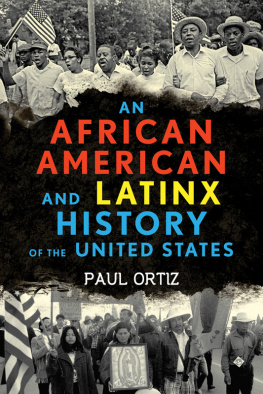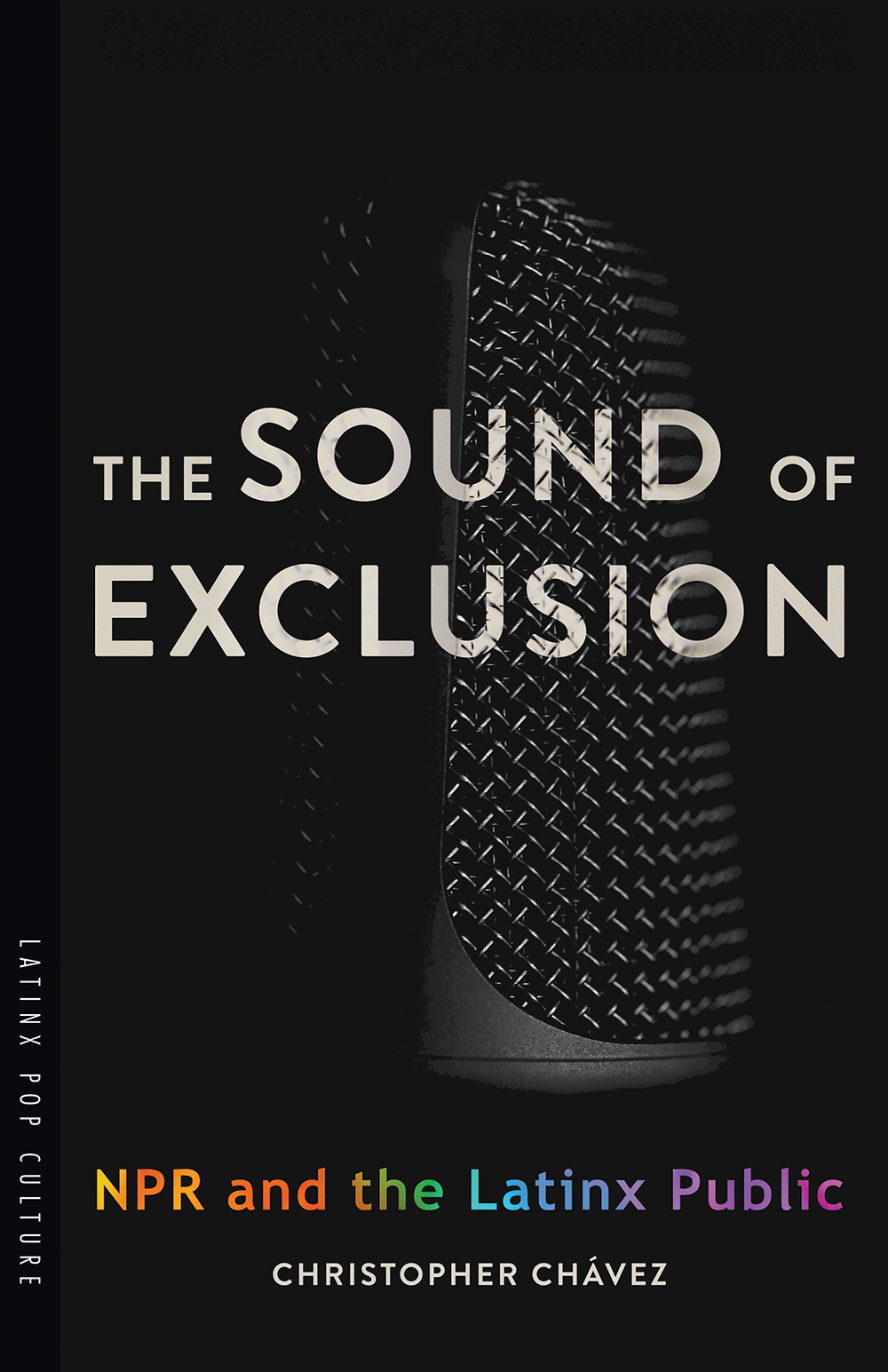
The Sound of Exclusion
Latinx Pop Culture
Series Editors
Frederick Luis Aldama and Arturo J. Aldama
The Sound of Exclusion
NPR and the Latinx Public
Christopher Chvez

The University of Arizona Press
www.uapress.arizona.edu
We respectfully acknowledge the University of Arizona is on the land and territories of Indigenous peoples. Today, Arizona is home to twenty-two federally recognized tribes, with Tucson being home to the Oodham and the Yaqui. Committed to diversity and inclusion, the University strives to build sustainable relationships with sovereign Native Nations and Indigenous communities through education offerings, partnerships, and community service.
2021 by The Arizona Board of Regents
All rights reserved. Published 2021
ISBN-13: 978-0-8165-4276-5 (paperback)
Cover design by Leigh McDonald
Cover photo by Marc Schulte/Unsplash
Typeset by Sara Thaxton in 10.5/13.5 Warnock Pro with Futura Std
Publication of this book is made possible in part by support from the Oregon Humanities Center at the University of Oregon, and by the proceeds of a permanent endowment created with the assistance of a Challenge Grant from the National Endowment for the Humanities, a federal agency.
Library of Congress Cataloging-in-Publication Data
Names: Chvez, Christopher, author.
Title: The sound of exclusion : NPR and the Latinx public / Christopher Chvez.
Other titles: Latinx pop culture.
Description: Tucson : University of Arizona Press, 2021. | Series: Latinx pop culture | Includes bibliographical references and index.
Identifiers: LCCN 2021021355 | ISBN 9780816542765 (paperback)
Subjects: LCSH: National Public Radio (U.S.) | Hispanic Americans and mass media. | Hispanic AmericansPress coverage.
Classification: LCC HE8697.95.U6 C53 2021 | DDC 384.54089/68073dc23
LC record available at https://lccn.loc.gov/2021021355
Printed in the United States of America
This paper meets the requirements of ANSI/NISO Z39.48-1992 (Permanence of Paper).
For Judy, Alexandra, and Daniela. And for my mother.
Contents
Acknowledgments
I began working on this book several months before Donald Trump was elected to office and completed the manuscript, four years later, during the final days of his administration. While this book serves as a historical perspective of how NPR has evolved over time, it becomes clear that the book is also a reflection of how Latinx journalists were navigating their profession at this particular moment in time, in which anti-Latinx rhetoric was coming from the nations most powerful.
An evaluation of public radio would not have been possible without the help of a number of industry professionals and academics. I want to begin by thanking my colleagues in journalism at the University of Oregon, who shared their insights and connections, particularly Charlie Butler, Damian Radcliffe, and Dr. Regina Lawrence. But I am especially grateful to Dr. Peter Laufer, who has been a champion of this book from its inception. I have appreciated your guidance on writing and publishing and your insights on the field of journalism.
I am also grateful to my colleagues Dr. Gabriela Martnez, Dr. Kim Sheehan, Dr. Leslie Steeves, and Dr. Janet Wasko, who have been mentors during my time in Eugene. And to my colleagues in Latinx media studies across the academyincluding Dr. Anghy Valdivia, Dr. Arlene Dvila, Dr. Mari Castaeda, Dr. Delores Ines-Casillas, Dr. Jillian Bez, Dr. Diana Leon-Boys, Dr. Claudia Bucciferro, Dr. Michael Lechuga, Dr. Litzy Galarza, Dr. Roberto Avant-Mier, Dr. Hector Amaya, and countless others who are building this field of studyyou inspire me every day by the work you do.
I would also like to express gratitude to Dr. Frederick Luis Aldama, Dr. Arturo Aldama, and Kristen Buckles, for their belief in and investment in this project. And to Carla Alvarez, from the University of Texas Libraries, for her tremendous help in locating some of the books historic images. Finally, I would like to thank the many public radio practitioners who participated in this study. Your keen insights and candid assessments of public radios norms and practices were essential for understanding how NPR, and public media in general, can better serve the public interest.
The Sound of Exclusion
Introduction
This erasure of Latinos by the national media is nothing new. For years, the marquee Sunday political talk shows have rarely featured Latinos. There is only one Latino on the New York Times editorial board, and there is none on the Washington Posts. NPR, where I work, recently had a period of time with no Latino reporters on its politics team before it made two hires.
Lourdes Garcia-Navarro, host of NPRs Weekend Edition Sunday
On March 25, 2006, an estimated five hundred thousand demonstrators gathered in downtown Los Angeles to protest the passage of the Border Protection, Antiterrorism, and Illegal Immigration Control Act (HR 4437), proposed legislation that was designed to criminalize undocumented immigrants and those who give them aid. Known simply as the Sensenbrenner Bill, the legislation prompted swift and immediate reaction from community organizations, trade unions, religious institutions, and residents alike.
Similar marches were reported in Denver, Phoenix, Atlanta, and other cities across the United States, but the Los Angeles march appeared especially strong. Said to be one the largest in the citys history, the protesters covered twenty-six blocks, marching along Spring Street, down Broadway and Main, finally making their way to City Hall, where Mayor Antonio Villaraigosa, the citys first Latinx mayor since 1872, addressed the crowd in Spanish (Watanabe and Becerra 2006a).
Looking at photographs of the event, it is hard not to notice the many ways in which Latinx protestors engaged in what Eco (1997) terms semiological guerilla warfare, appropriating words, images, and symbols to openly challenge the state position while asserting their fundamental right to belong in a country that does not always wish to claim them. Some of the protestors wore T-shirts that read We are America. Others waved American flags, gestures that were meant to be read less as overt displays of nationalism, but more as attempts to challenge popular conceptions of what it means to be American.
Others framed their protest in clear moral terms, carrying signs that read We are imigrantes, not criminals and Ningn ser humano es ilegal!! There were photographs of protestors wearing white, and others of clergy wearing handcuffs. In a show of solidarity, Los Angeles Catholic Archbishop Cardinal Mahony was photographed marching side by side with several Latinx youths. Mahony had set the stage two days earlier, writing an op-ed in the New York Times making the moral case against the bill. While we gladly accept their taxes and sweat, we do not acknowledge or uphold their basic labor rights, Mahony wrote in the piece. At the same time, we scapegoat them for our social ills and label them as security threats and criminals to justify the passage of anti-immigration bills (Mahony 2006).
The 2006 marches have been the subject of scholarly interest, primarily with a focus on political mobilization (Beltrn 2010; Zepeda-Milln 2017). However, I want to draw attention to the journalistic coverage of the event, and in particular the disparities in coverage between different kinds of news organizations. Overall, journalists across the country appeared to be taken aback by the sheer size and diversity of the crowd in downtown Los Angeles. This is surprising, given that in 2006 Los Angeles County was home to the largest Latinx community in the nation, numbering over 4.7 million (U.S. Census 2006). But there was also confusion over how to cover the event. To get a handle on the story, national news media outlets dispatched reporters to interview protesters. Translators were employed en masse to make Spanish-language testimonies comprehendible to an intended audience of English monolingual listeners.
Next page
